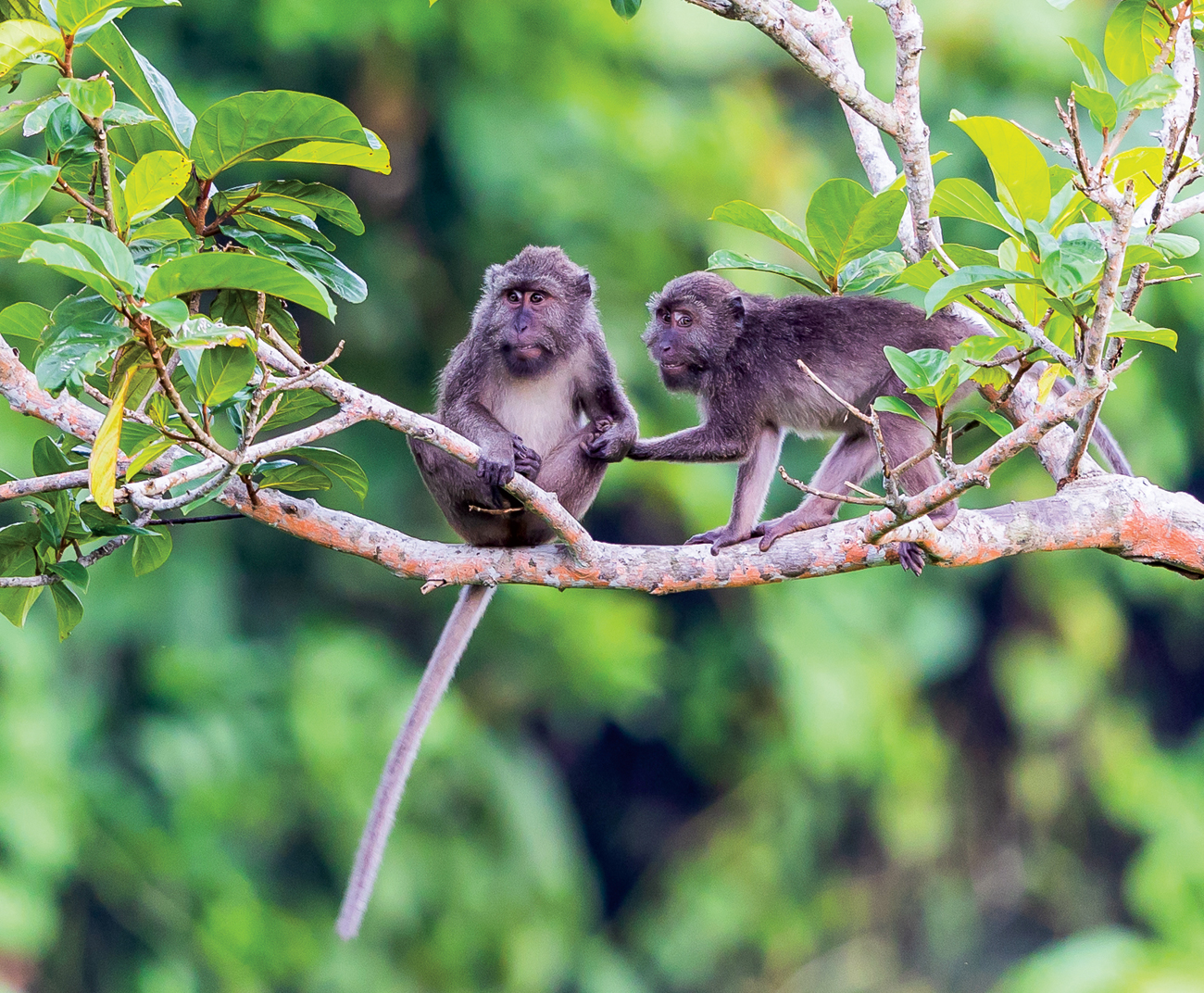Head-Over-Heels In Love With Great Nicobar
First published in Sanctuary Asia,
Vol. 45
No. 10,
October 2025
By Tansy Troy
I was beginning to wonder if I had become obsessed, perhaps even possessed. Day after day, night upon night, there I would sit, poring over photographs of rare and endangered species endemic to Great Nicobar. Book after book, article after article. I even attempted to grasp the legal aspects of the Great Nicobar story, desperately seeking impossible loopholes in the vain hope that there must be some way to protect the exquisite birds, animals, reptiles, amphibians, sea mammals, fish, corals, plants, and grasses from the relentless plans to destroy their pristine biosphere with shipping ports, concrete resorts, casinos and power plants.
The more I read, the less I could see this as anything other than land-grab, another thinly-disguised bid to colonise the only home of over 1,750 species, many of them endemic to Great Nicobar; and the ancestral tribal lands of the Shompen and Nicobarese, the island’s Indigenous inhabitants.

The Great Nicobar Island is home to over 1,750 species, many of them endemic; found nowhere else in the world! Photo: Adhith Swaminathan.
So I write protest poems. I run art residencies. I paint watercolours of as many endangered species as I know. I print postcards of these and draft a children’s novel. I review essays and books about Great Nicobar. I talk about the situation to everyone I know. Many others are working night and day too but nothing, it seems, is making a substantial difference. Until, that is, I happen upon an article about the imperiled Nicobar Palm in Sanctuary Asia (April 2023, Volume 43, Issue 4), by Soham Kacker, who writes how “islands form a natural laboratory for evolution” in which “the process of genetic isolation and amplification accelerates speciation”.
And that’s when it hits me, bang in the middle of the solar plexus. I was not obsessed. Just helplessly in love with an island. The first four letters in the very word ‘evolve’ said it all – read backwards: e-v-o-l = l-o-v-e.
There was nothing left for me to do but give in to this deep and ongoing passion. Forget the protest. Fiddlesticks to the fight. I had nothing left to give but love in all its intricacies, its happy fears and passionate exchanges. I allow myself at last to open to tenderness and vulnerability, to the call to unity.
I find myself singing love songs for the many species of Great Nicobar. Here are a few. I hope they touch your heart and that as you read, you too are inspired to fall helplessly, Head-over-Heels in Unconditional Love with Great Nicobar and all its inhabitants. That kind of care might be the last defence we have left.
Love Songs for Great Nicobar
Phalaenopsis speciosa[1]
Moth Orchid
Startled by this unique florescence, elliptic gnosis, beguiling scent, I watch you epiphytically dangling on air like the moth you are named after: phalaina.[2]
No one knows exactly which moth, not even those who poured libations as you swayed, enticing pollinators, magnetising them to your honeyed hole.
Arching your supine stem spine, allowing it all to hang out, subpendent panicles whispering to the elusive one
whom I cannot trace (though I scour continents), wondering if your compact mass of sticky sugar could be shaken loose by buzz pollination of Amegilla[3] bee, using its vibrational prowess to pull you into certain exstasis –
or whether some drowsy hawkmoth just pops in and takes you on the wing.
II
Tell me really, just who is your man? Glassy tiger, flapping slow along some forest path, then circling round your maidenhead for hours releasing his own irresistible charm –
Or the not so common rose, noble as the Andaman viscount bright red thorax and flower power cloak;
Or might you have an understanding with emerald tailed jay, wingspan wide as outstretched palm?
Wouldn’t put it past you to invite that dapper clipper home, swift gliding over stream above path around glade while you await his geometric approach sticking out your labellum just in case he should be in any doubt.
Limnonectes shompenorum
Shompen Frog
Like the tribe you take your name from, you prefer to dwell unseen.
Though robust, you too are susceptible to climate and flippant change.
Sing your chorus in the rain at the exact right moment –
I thirst to hear your song.
To the frog-echo sky, lift up your voice: croak me into completion.
Libellago balus[4]
A Great Nicobar Damselfly
You’re so rare you haven’t even got a common name my dove, pigeon, bird of the sea. Watching you, perched on your rock, Mid-stream, Mid-dream, your wings folded over secrets, firehot passionate underbelly, while delicate purple spot on tip of each translucent wing confirms your royal peerage amongst the many flighty young-thing Damsels.
Xenopeltis unicolour
Sunbeam Snake
Through your fossorial Underworld, lead me into labyrinth passage, pull me down let me explore your ways, your days spent up in night-time wanderings until one day you’re hungry enough to emerge, enwrap me
every scale a glorified rainbow quiver.

Long-tailed macaque Macaca fascicularis. Photo: Gobind Sagar Bhardwaj.
Macaca fascicularis|
Long-tailed Macaque
Up in an endling tree, Macaque looks out over the Bay as waves touch sand, glow luminescent – throw sparks skywards as fireflies, deeply into the woods to grow, glow-in-the-dark mushrooms.
Considering the scene, Macaque finds she knows the names of paradise.
Krakow! Her alpha mate yells to the kids, gathering in the tribe, while Macaque continues to contemplate the prescient, turning tide.
Tansy Troy An India-based poet, illustrator and educator, she conceived and edits The Apple Press, a young people’s eco journal printed on khadi paper. She publishes regular articles, stories and eco-poetry in The Scroll, The Chakkar and Usawa, and performs masked eco theatre for audiences across India.
[1] The Phalaenopsis speciosa orchid is endemic to Great Nicobar.
[2] Phalaina: moth-like, Latin.
[3] Amegilla bees occur in GNI and are known to pollinate Phalaenopsis orchids, along with certain moths, the absence of poricidal anthers (tubular or cylindrical, with small pores or openings at the tip to release pollen) in Phalaenopsis orchids renders buzz pollination/depollination infeasible.
[4] Balus – Latin dove, pigeon, sea-bird.



